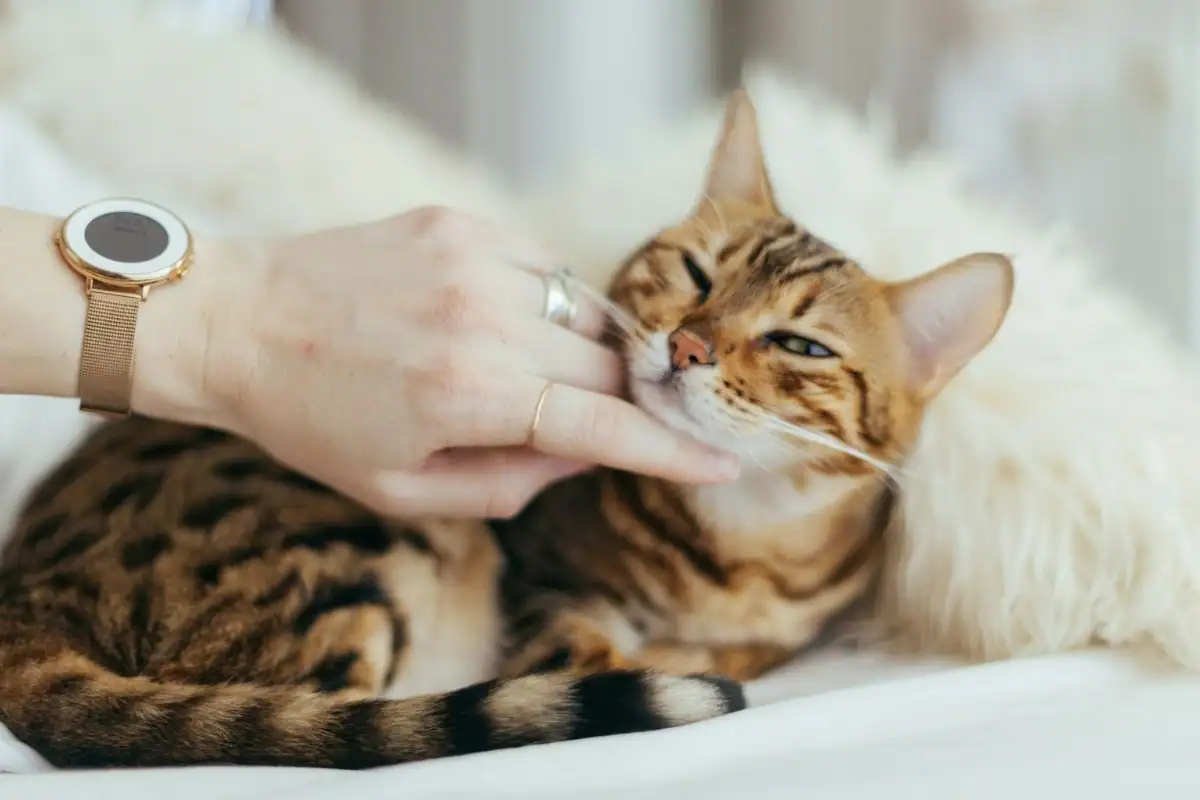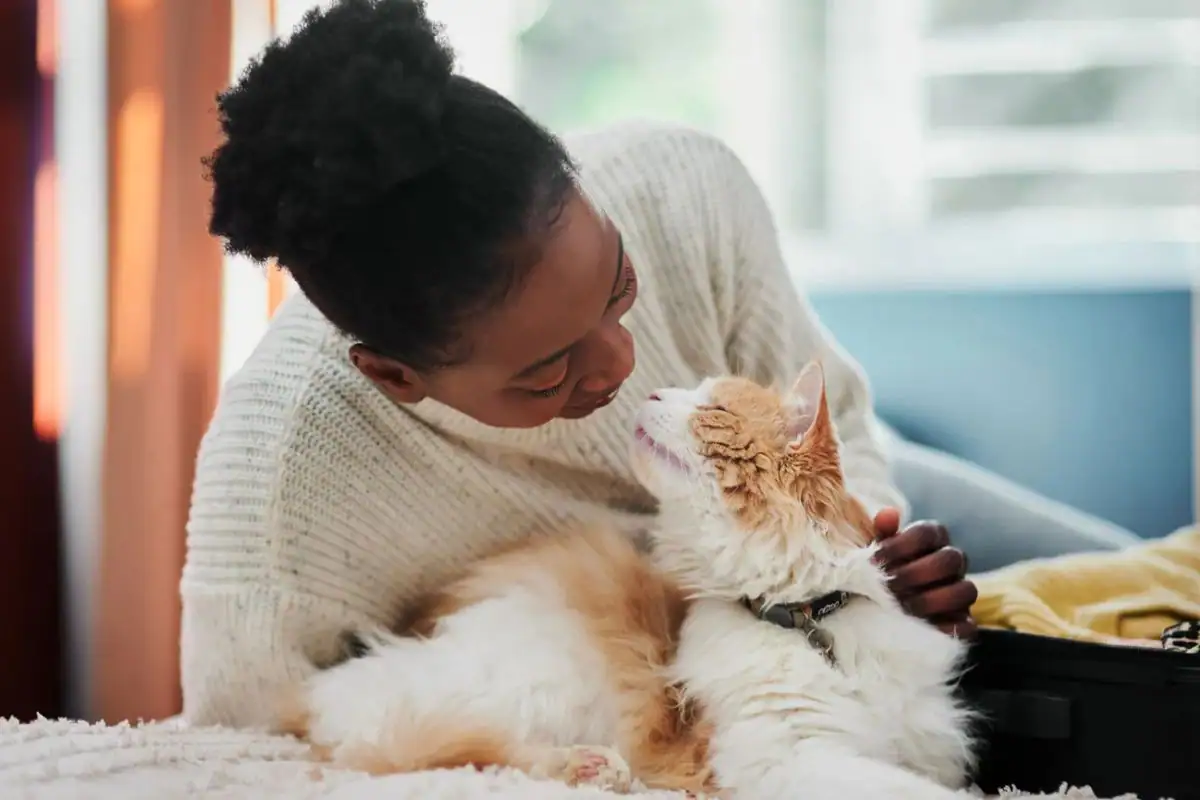Advertisement
Decoding Cat Language: The Secrets Behind Purring
Advertisement
The soft, low rumble of a purring cat is a familiar sound that brings comfort to many homes. For cat owners, there's nothing quite like relaxing with a feline friend curled up and purring on their lap. While it's commonly believed that a purring cat is a happy cat, that's not always the case. In fact, cats purr for several reasons. By observing other behaviors your cat displays, you can understand why they're purring and whether there's any cause for concern.
How Cats Purr
Scientists once thought that a cat's purr was linked to vibrations in their heart. If you've ever felt a cat purring, you might see why they believed this—the rumble seems to emanate from the chest. However, we now know that purring originates from the larynx, located in the throat. As the cat breathes in and out, the muscles in the larynx vibrate at a frequency of 25 to 150 vibrations per second, producing that distinctive purring sound.

Advertisement
Not Every Cat Purrs
Generally speaking, small cats purr while big cats roar. Some larger wild cats like pumas and mountain lions do purr, but they can't roar. It seems to be one or the other in the feline world. Although a few big cats that roar make sounds similar to purring, it's not true purring. None of the Pantherinae family—such as tigers, lions, jaguars, leopards, snow leopards, or clouded leopards—can purr in the way domestic cats do.

Advertisement
Purring for Joy
Just as humans smile and dogs wag their tails to show happiness, cats purr to express contentment. It's one of the most recognizable signs of a happy cat. That low, rasping vibration is often heard when a cat is being petted or tickled. If you have more than one cat, you might notice them purring around each other. Cats that have bonded with other animals, like dogs, may purr in their company too.

Advertisement
Purring to Communicate
Cats start purring just a few days after they're born. This early purring helps their mother locate them for safety and feeding. While it's been thought for decades that purring is a form of communication, there have been few scientific studies to confirm this definitively. Nevertheless, it's likely that purring serves a communicative purpose. Although we don't fully understand how and why cats purr to one another in the wild, we do know that they purr while grooming each other.

Advertisement
Purring for Comfort
Sometimes cats purr when they've been startled or after a stressful event, like being chased. Some also purr loudly when exploring new environments or unfamiliar places. Scientists believe that cats purr in these situations to self-soothe and stay calm. It's kind of like a person humming to themselves when they're nervous or a child sucking their thumb when scared.

Advertisement
Healing Power of Purrs
Purring may have evolved as a low-energy way for cats to keep their bones and bodies in good condition while resting. A cat's purr vibrates at a frequency between 20 and 150 Hertz, which has been shown to have therapeutic effects. Although the exact reason isn't fully understood, this frequency is thought to promote cell repair and bone growth.
While the healing power of purring primarily benefits cats themselves, humans can also reap these benefits when a purring cat sits on them. Purring has been proven to lower blood pressure in humans and may even reduce levels of the stress hormone cortisol.

Advertisement
A Purring Cat Might Be Unhappy
Although purring is most often a sign of contentment, it can also indicate nervousness, fear, or stress. To determine if a cat is experiencing negative emotions, you need to observe their body language. Cats may meow at humans, but much of their communication is visual and scent-based. If a cat has wide eyes with dilated pupils or flattened ears, they might be unhappy and purring to comfort themselves. Thankfully, more often than not, a purr signifies happiness.

Advertisement
Loudest Purr on Record
Some cats purr so quietly that you have to be right next to them to hear it, while others have surprisingly loud purrs. The loudest purr recorded by a domestic cat reached 67.8 decibels—the same volume as a vacuum cleaner. This record was set on April 2, 2015, by Merlin, a cat belonging to Tracy Westwood in the UK.

Advertisement
Some Breeds Purr More Than Others
Certain cat breeds are known to purr more loudly or frequently than others. The Tonkinese breed, for example, loves to fetch, play outdoors, and generally enjoys life to the fullest. They're also known for being vocal and have powerful purrs that might surprise those new to the breed. On the flip side, larger domestic cats don't necessarily have louder purrs. The Maine Coon, one of the largest domestic breeds, actually has a very quiet purr.

Advertisement
Feed Me
When a cat weaves between your feet, looks up at you, and glances toward their empty food bowl, they're clearly saying, "Feed me!" Some cats also purr loudly when they're asking for food. This loud purring is often used to wake up their human companions to get breakfast. Many owners find themselves feeding the cat before themselves, showing just how effective a purr can be.

.png)




